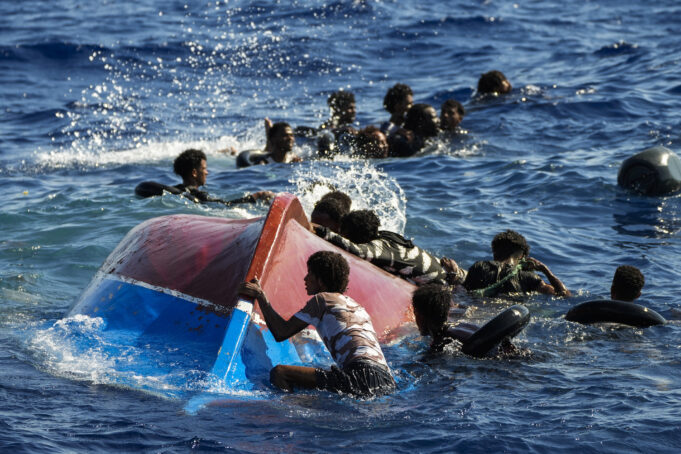Over 400 migrants died while attempting to cross the Central Mediterranean between January and March of this year, making it the deadliest quarter on record since 2017, the International Organization for Migration (IOM) said on April 10.
IOM’s Missing Migrants Project documented 441 deaths during this period, though the true toll is likely to be higher.
Investigations continue into several reports of so-called invisible shipwreck—cases where boats are reported missing but there are no records of survivors or search and rescue (SAR) operations.
The fates of more than 300 people aboard those vessels remain unclear, IOM said.
Delays costing lives
The Central Mediterranean route—stretching overseas from North Africa to Italy and, to a lesser degree, Malta—is the world’s most dangerous maritime crossing.
IOM said the rise in deaths comes amidst delays in State-led rescue responses and hindrances to SAR operations carried out by non-governmental organizations (NGOs).
“The persisting humanitarian crisis in the Central Mediterranean is intolerable,” said IOM Director General, António Vitorino.
“With more than 20,000 deaths recorded on this route since 2014, I fear that these deaths have been normalized. States must respond. Delays and gaps in State-led SAR are costing human lives,” he added.
Delays in State-led rescues were cited as a factor in at least six incidents in the Central Mediterranean, leading to at least 127 fatalities, while the complete absence of response in a seventh case, claimed at least 73 lives.
NGO vessels detained
Meanwhile, NGO-led rescue efforts have been “markedly diminished” of late, the UN agency said, outlining the latest incidents.
IOM reported that on March 25, the Libyan Coast Guard fired shots in the air as an NGO rescue ship, Ocean King, was responding to a report of a rubber boat in distress. The following day, another vessel, the Louise Michel, was detained in Italy after rescuing 180 people, reminiscent of the situation of the Geo Barents, which was detained in February and subsequently released.
Over the past weekend, 3,000 migrants reached Italy, bringing the total number of arrivals so far this year to 31,192, IOM said.
On April 11, a vessel carrying roughly 800 people was rescued more than 200 kilometers (124.2 miles) southeast of Sicily by the Italian Coast Guard with the assistance of a commercial vessel.
The Italian Coast Guard also rescued another ship with around 400 migrants that had been adrift for two days between Italy and Malta. IOM noted that not all migrants from these ships have reached safety and disembarked in Italy yet.
A legal obligation
“Saving lives at sea is a legal obligation for States,” said Mr. Vitorino. “We need to see proactive State-led coordination in search and rescue efforts.”
IOM said the troubling situation in the Central Mediterranean underscores the need for dedicated, predictable State-led SAR and disembarkation.
Action must also include supporting NGOs that provide lifesaving assistance at sea, and ending the criminalization, obstruction and deterrence of the efforts of those who provide such assistance.
IOM stressed that all maritime vessels, including commercial ships, have a legal obligation to provide rescue to boats in distress.
IOM further called for more concerted action to dismantle criminal smuggling networks and to prosecute those who profit from the desperation of migrants and refugees by facilitating dangerous journeys. (UN News)













